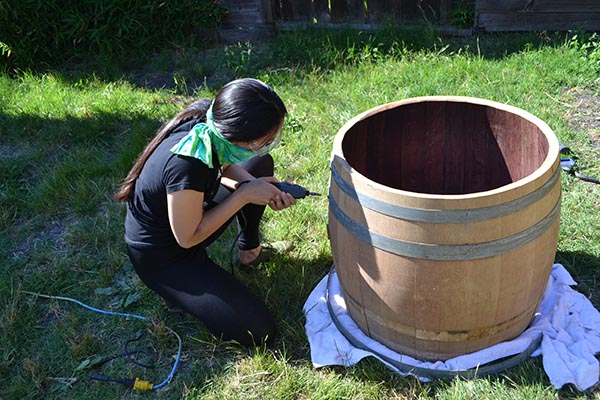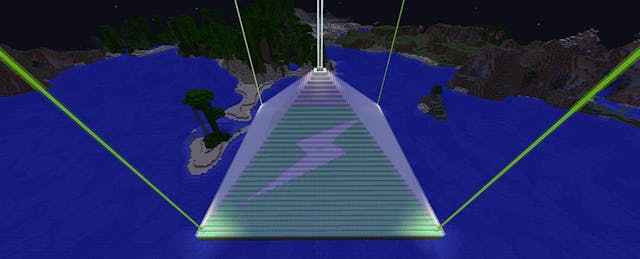While in graduate school at Princeton, future Nobel Prize-winning physicist, Richard Feynman, took a graduate-level class in biology, despite having only rudimentary knowledge of the subject. When it came time to present to his class, this is what happened:
The next paper selected for me was by Adrian and Bronk. They demonstrated that nerve impulses were sharp, single-pulse phenomena. They had done experiments with cats in which they had measured voltages on nerves.
I began to read the paper. It kept talking about extensors and flexors, the gastrocnemius muscle, and so on. This and that muscle were named, but I hadn't the foggiest idea of where they were located in relation to the nerves or to the cat. So I went to the librarian in the biology section and asked her if she could find me a map of the cat.
"A map of the cat, sir?" she asked, horrified. "You mean a zoological chart!" From then on there were rumors about some dumb biology graduate student who was looking for a "map of the cat."
When it came time for me to give my talk on the subject, I started off by drawing an outline of the cat and began to name the various muscles.
The other students in the class interrupt me: "We know all that!"
"Oh," I say, "you do? Then no wonder I can catch up with you so fast after you've had four years of biology." They had wasted all their time memorizing stuff like that, when it could be looked up in fifteen minutes.
(as told in the incredible, Surely You're Joking, Mr. Feynman!)
Over 70 years later, that fifteen minutes is now fifteen seconds. Memorizing facts is becoming obsolete. Knowing how to find, organize, synthesize and present information is THE 21st century skill to have. Fortunately, we have a few new toys to help us improve.
The Educational Value of Minecraft and Making
I love Minecraft. You love Minecraft. Kids love Minecraft. Everybody loves Minecraft! Since its release in 2010, Minecraft has sold over 20 million copies on PC/Mac alone and become a cultural phenomenon.
In a similar fashion, the Maker Movement has been steadily building steam over the past decade. Built upon a foundation of resourcefulness and rule-breaking, rebellious Makers are taking over the world, armed with lasers, robots, and 3D printed gadgetry.
Both Maker and Minecraft activities tend to be categorized under informal learning, Constructivist learning or Constructionist learning. You might also consider them project-based learning, although PBL tends to focus on more academically oriented subject matter. People seem to have a hard time categorizing them because while everyone generally agrees that both Minecraft and Maker activities are somewhat educational, there are no set of “standards” by which one’s Maker competency is judged and it’s not clear what you actually learn by doing them.
I decided to find out.
A Practical Weekend of Minecraft and Making (and Coding!)
This past weekend, I gave myself an assignment: work on a Minecraft project, a Maker project, and a coding project—three fun activities that I believe all interrelate. I would write down the process, what I learned and where the learnings overlap.
Project Minecraft: Build the EdSurge Logo
I chose a pretty simple concept to start with: re-create the EdSurge logo in Minecraft. For reference, I used a 72x72 PNG file of the EdSurge Bolt (5184 total pixels). I considered halving the resolution to 36x36 (1296 total pixels) but the resulting image lost the sharpness of the bolt. Since the ability to alias using Minecraft blocks is limited, I went with the full size of 72x72.
I really wanted to build in Survival mode for the street cred, but collecting 5184 blocks was a bit much, and I had a lot to do this weekend. (Plus, I didn’t want any stray Creepers to wander over and destroy my work mid-construction.) So, I gave in and used Creative mode. You can see the finished product at the top of the page.

While building the EdSurge Bolt in Minecraft, I learned…
- there are a ton of new items in Minecraft that I didn’t know existed (back in my day, we built beacons with dirt and torches!);
- Minecraft offers a very limited palette of block colors. Hacking gradients with colored glass doesn’t work very well;
- to double check for off-by-one errors before laying down eight rows of dirt;
- if you float at the right level, you can fly straight backward while holding down the mouse button to quickly lay a row of blocks;
- triple-tapping SPACE is faster than pressing SHIFT to descend in Creative mode;
- the Apple Magic Mouse is terrible for Minecraft.
Project Maker: Dismantle a Wine Barrel
This project is a component of a larger project to build a taiko drum with my friends following instructions from the Stanford Taiko Drum Building Manual. Using the wood shop from my local hackerspace, Ace Monster Toys, and tools from my landlord’s tool shed, we had to cut the ends off a fresh wine barrel and knock off the metal rings to separate the staves. It seemed simple enough, but ended up being much more difficult than we anticipated.

The manual recommended ordering barrels that were pre-prepped with the ends cut and rings loosened, but we found a shop nearby that sold used super cheap wine barrels. Although we saved a few dollars, it ended up being a bit of a hassle. Eventually, we succeeded but only with the help of my landlord and a helpful Ace Monster Toys member (thank you, mysterious stranger!)

While dismantling the wine barrel, I learned…
- sharp tools make a huge difference;
- wine barrels are HEAVY;
- if you’re not careful while removing wine barrel staples, you can rip the heads off;
- that when left outside, wine barrels will expand (or maybe the metal rings contract?) making it impossible to knock the rings off with a crowbar;
- what a Dremel rotary grinder is;
- how to hold a Dremel grinder so the sparks fly away from my face;
- the metal rings snap apart with force when broken, which is pretty scary when you’re holding live power tools.
Project Coding: Build an On-Theme, Multi-Platform Browser Game
I included this third project to relate Minecraft and Making to an important modern skill: learning to code. Full disclosure: I already know how to code and I’ve built games in the past. However, I’ve never built a browser game using only JavaScript/HTML/CSS. Designing and implementing a game that would work within the structure of an EdSurge article was a fun challenge.
I decided to use Minecraft as the basis for the game. Crafting seemed too ambitious, so I stuck with the mining aspect. Once I figured out how to implement a sprite sheet, the code was surprisingly easy to implement—there are fewer than 80 lines of actual code. While building this, I gained a whole new appreciation for the elegance and simplicity of Minecraft's design.
I think Browser Minecraft ended up being pretty fun. Give it a try below. If you're skilled (and lucky) you might even win yourself a free copy of Minecraft!
Browser Minecraft
- how to implement a sprite sheet in JS/CSS;
- how to use the .clone() and .appendTo() jQuery functions;
- that all of the Minecraft terrain textures can fit on a single 256x256 texture sheet. Wow!
What Did I Learn?
I sure learned a lot this weekend, but nothing that one might find in a Common Core standard. Most of this knowledge could qualify as “useless,” and never come up again. Some of it, I already knew but “forgot” in the actual moment. The project with the most practical application (coding) was the one where I learned the least (to be fair, I spend about 30-50 hours per week coding so this is not unexpected).
Then again, here are some lessons that carried over between all three activities:
- Measure twice, cut once.
- Always pick the right tool for the job.
- Plans are useless but planning is indispensable.
- If you don’t know how to do something, ask someone for help.
These are not standards that can be mastered. This is wisdom, not knowledge, and as knowledge becomes more readily accessible, the wisdom to put that knowledge into practice becomes increasingly important. Back in Feynman’s day, you might make a living simply by having encyclopedic knowledge of a specific subject, but that is no longer the case. It’s the miners and makers of today who will be the movers and shakers of tomorrow.


